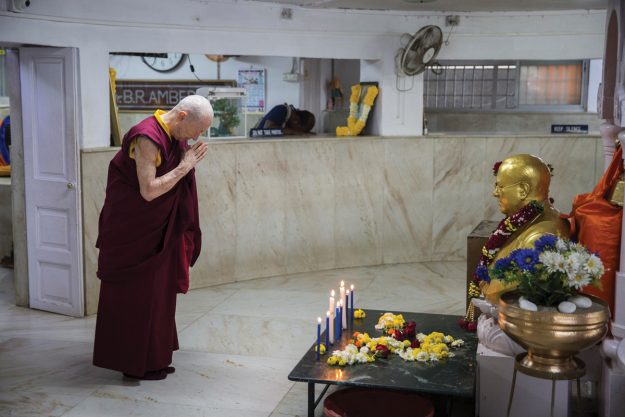
6 a.m. Every day starts with meditation. Even better is meditating with chirping birds in a garden at Somaiya Vidyavihar, an educational institution and campus.

8 a.m. After a South Indian breakfast of idli [rice cakes] with sambal [chili sauce], I’m off to visit local Buddhist monasteries and pilgrimage sites.

8:30 a.m. The first stop is Chaityabhumi Stupa, a memorial to B. R. Ambedkar, who drafted the constitution for an independent India. In 1956, he led nearly half a million people from low-caste and outcaste communities to become Buddhist.

11 a.m. I visit a temple founded by Ambedkar Buddhists in the Ramabai Nagar District and meet with members of the local community. Ambedkar Buddhists still face serious discrimination, so this is an opportunity to encourage them and express international solidarity on social justice issues.

2 p.m. Navigating the chaos of Mumbai’s streets and waterways can get a bit overwhelming, so it’s relaxing to take an occasional mental health break.

4 p.m. After lunch, I meet students and faculty at the K. J. Somaiya Centre for Buddhist Studies at the University of Mumbai to explore the role of gender studies in Buddhism. We often hear people say, “Men and women are equal in Buddhism.” So why do gender inequalities persist in Buddhist societies and institutions?
♦
See the previous installment of “A Day in the Dharma”: A Day in the Dharma with Jules Shuzen Harris, abbot of Soji Zen Center